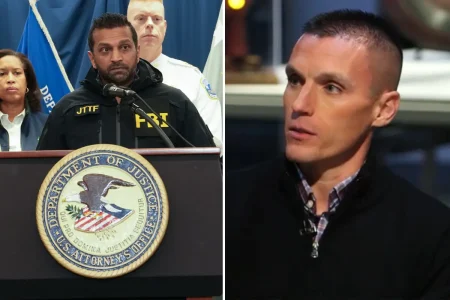Shamkhani’s Paradox: Security Chief’s Crackdown on Women Contrasts with Daughter’s Modern Wedding
High-Profile Iranian Security Official Faces Scrutiny Over Family Celebration’s Western Style
In the heart of Tehran, where the strict moral codes of the Islamic Republic remain rigorously enforced, a wedding celebration has sparked intense debate about the disconnect between public policy and private practices among Iran’s ruling elite. Rear Admiral Ali Shamkhani, a prominent figure who has overseen some of the country’s most severe crackdowns on women’s freedoms, recently found his family in the spotlight when his daughter’s wedding appeared to embrace precisely the Western influences he has spent his career opposing.
The lavish celebration, documented extensively through social media despite Iran’s intermittent internet restrictions, revealed a striking contrast to the revolutionary values Shamkhani has publicly championed throughout his tenure as one of Iran’s top security officials. Guests at the wedding were seen in designer gowns far removed from the modest dress codes enforced upon ordinary Iranian women, with elaborate hairstyles and makeup that would typically result in detention if displayed on Tehran’s streets. The celebration featured mixed-gender dancing, Western music, and other elements of contemporary wedding culture that stand in direct opposition to the traditional Islamic values Shamkhani has enforced through Iran’s powerful security apparatus. For many Iranians, the spectacle represented more than just a family celebration—it embodied the hypocrisy that has fueled growing public discontent with the regime’s moral policing.
The Rising Tension Between Public Enforcement and Private Privilege
Shamkhani’s role in Iran’s security establishment has been particularly significant in recent years as protests over women’s rights have intensified across the country. Following the death of Mahsa Amini in 2022—a young woman detained by morality police for allegedly wearing her hijab improperly—Iran witnessed unprecedented demonstrations against the mandatory dress code and broader restrictions on women’s freedoms. As Secretary of the Supreme National Security Council during this period, Shamkhani played a central role in coordinating the government’s response, which human rights organizations have documented as involving thousands of arrests, violent suppression of peaceful protests, and numerous fatalities. The admiral’s public statements consistently defended these measures as necessary to preserve Iran’s Islamic identity and resist Western cultural influence—the very influences apparently embraced at his daughter’s wedding.
The contradiction highlights a growing point of contention in Iranian society: the perception that the ruling class exempts itself from the religious strictures it imposes on ordinary citizens. “What we’re seeing is a classic case of ‘rules for thee, but not for me,'” explained Dr. Farzan Sabet, a researcher specializing in Iranian politics at the Geneva Graduate Institute. “The children of regime officials often lead lives that would be impossible for ordinary Iranians without risking arrest or worse. These displays of privilege aren’t just about wealth—they represent freedom from the ideological constraints that define daily life for most people in the country.” This sentiment has been echoed across social media platforms where Iranians have shared images from the wedding alongside footage of morality police confrontations with women over dress code violations, creating powerful visual representations of the double standard at play in Iranian society.
Historical Context: Revolutionary Values and Evolving Realities
The Islamic Republic’s approach to gender and public morality has evolved significantly since the 1979 revolution, though the fundamental principles remain encoded in law. The early revolutionary period saw the rapid implementation of strict dress codes and gender segregation policies, justified as necessary steps to purify society from Western cultural contamination and restore authentic Islamic values. Shamkhani, who rose through military ranks during the Iran-Iraq war before assuming senior security positions, has long positioned himself as a guardian of these revolutionary principles. His statements on women’s protests have consistently framed the movement as a foreign conspiracy rather than a genuine grassroots demand for personal freedom, reinforcing the narrative that Western-influenced behaviors represent an existential threat to Iranian society and Islamic identity.
This historical context makes the apparent contradictions in his family’s private celebrations particularly noteworthy. “The revolutionary generation has always had a complicated relationship with modernity,” noted Dr. Azadeh Moaveni, author of several books on Iranian society. “Many officials who publicly defend the most conservative interpretations of Islamic law have children who’ve been educated abroad, use Instagram, and embrace global youth culture. What’s new isn’t the contradiction itself, but rather the public’s ability to witness and document these contradictions through social media.” Indeed, despite periodic internet shutdowns and filtering of social platforms, images and videos from elite celebrations regularly find their way to the public, undermining official narratives about Western cultural influence and Islamic authenticity. The wedding represents just one high-profile example of a phenomenon many Iranians have observed for years: the children of the revolutionary elite often enjoy freedoms denied to the general population.
Broader Implications for Iran’s Social Contract
The public response to Shamkhani’s daughter’s wedding reflects broader tensions in contemporary Iranian society about the future of the Islamic Republic’s founding principles. Young Iranians, particularly in urban centers, increasingly question the legitimacy of morality restrictions that seem selectively applied based on political connections and social status. Recent surveys suggest a significant decline in religious observance among younger generations, with many embracing a more personal and less institutional approach to faith that challenges the state’s authority to enforce religious practices. This generational shift creates profound challenges for a system whose legitimacy rests partly on claims of defending authentic Islamic values against Western cultural imperialism.
The wedding controversy also emerges against a backdrop of severe economic challenges facing ordinary Iranians. With inflation reaching record levels, currency devaluation affecting purchasing power, and international sanctions limiting economic opportunities, displays of luxury among the elite have become increasingly provocative. “The economic dimension can’t be separated from the cultural tensions,” explained economist Djavad Salehi-Isfahani of Virginia Tech University. “When people are struggling to afford basic necessities, seeing officials who claim to represent Islamic modesty hosting extravagant celebrations feels like a particular form of betrayal.” This sentiment has increasingly dominated social media discussions about the event, with many commentators focusing less on the specific cultural elements of the wedding and more on what they represent about economic inequality in a system that claims social justice as a foundational value.
The Future of Iran’s Cultural Politics
As Iran approaches the 45th anniversary of its Islamic Revolution, the Shamkhani wedding controversy illuminates the complex evolution of cultural politics within the Islamic Republic. The generational divide between revolutionary hardliners and their more cosmopolitan children represents a microcosm of broader social transformations occurring throughout Iranian society. While the government maintains its official stance on issues like mandatory hijab and gender segregation, enforcement has become increasingly difficult in a connected world where Iranians can easily observe alternative models of Islamic societies where such restrictions don’t exist. The contradiction between public policy and private practice among the elite undermines the moral authority of those tasked with enforcing these regulations, contributing to a crisis of legitimacy that transcends any single wedding celebration.
For Shamkhani himself, the public scrutiny of his family’s private celebration represents a personal dimension of the political challenges facing Iran’s establishment. The admiral, like many of his contemporaries who rose to prominence during the revolutionary period, must navigate a rapidly changing society where the original revolutionary promise of authentic Islamic governance faces significant challenges from within. The wedding controversy ultimately demonstrates that Iran’s cultural battles are no longer fought simply between the state and external influences, but increasingly within families, communities, and even individual consciences as Iranians reconcile their religious and national identities with their aspirations for personal freedom. As one Iranian commentator noted on social media: “The revolution’s children no longer believe in the revolution’s rules. What does that mean for the revolution’s future?” It’s a question that resonates far beyond one high-profile wedding, touching on fundamental questions about Iran’s path forward in an increasingly interconnected world.








